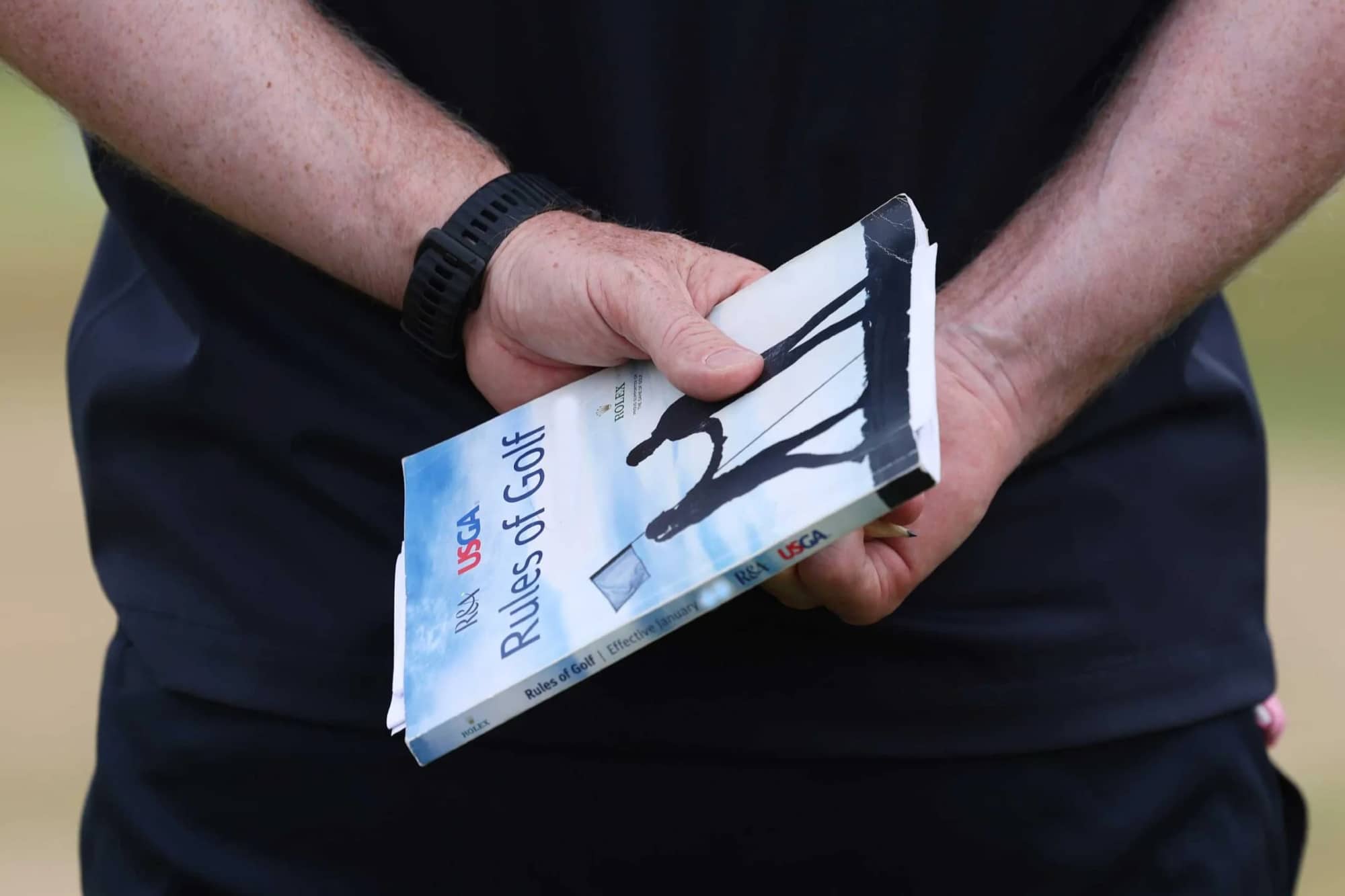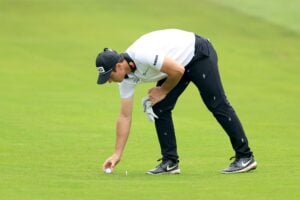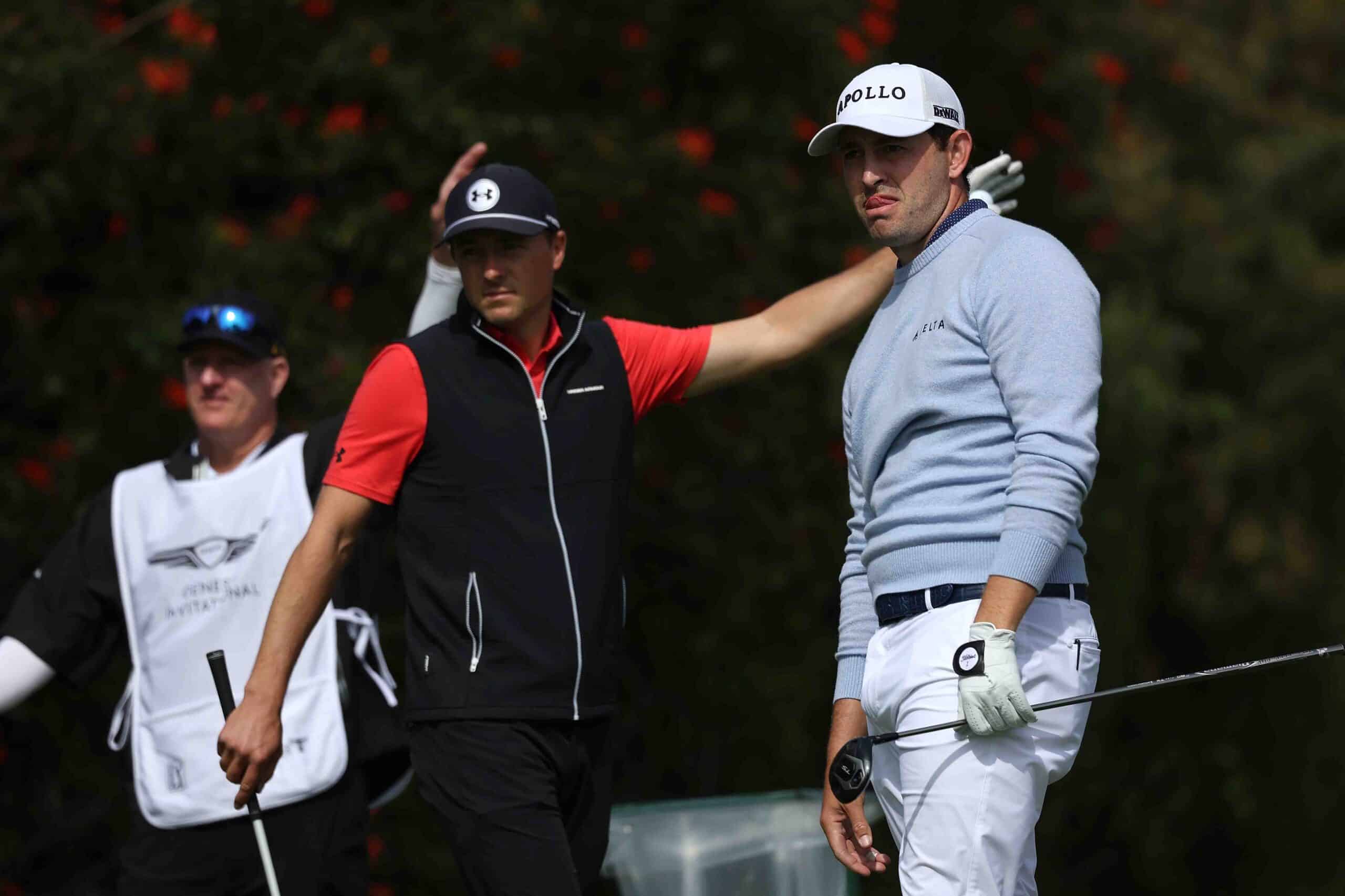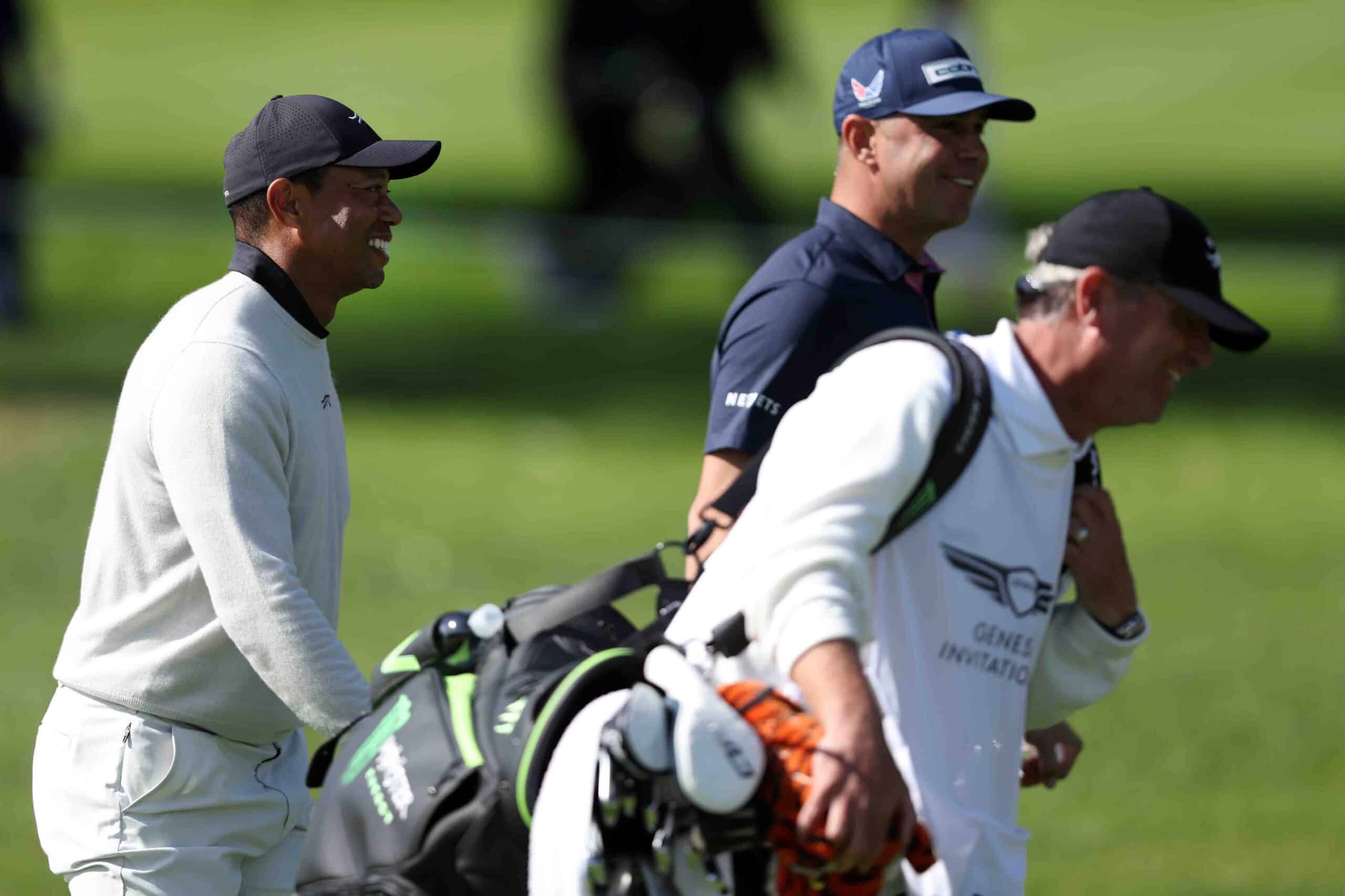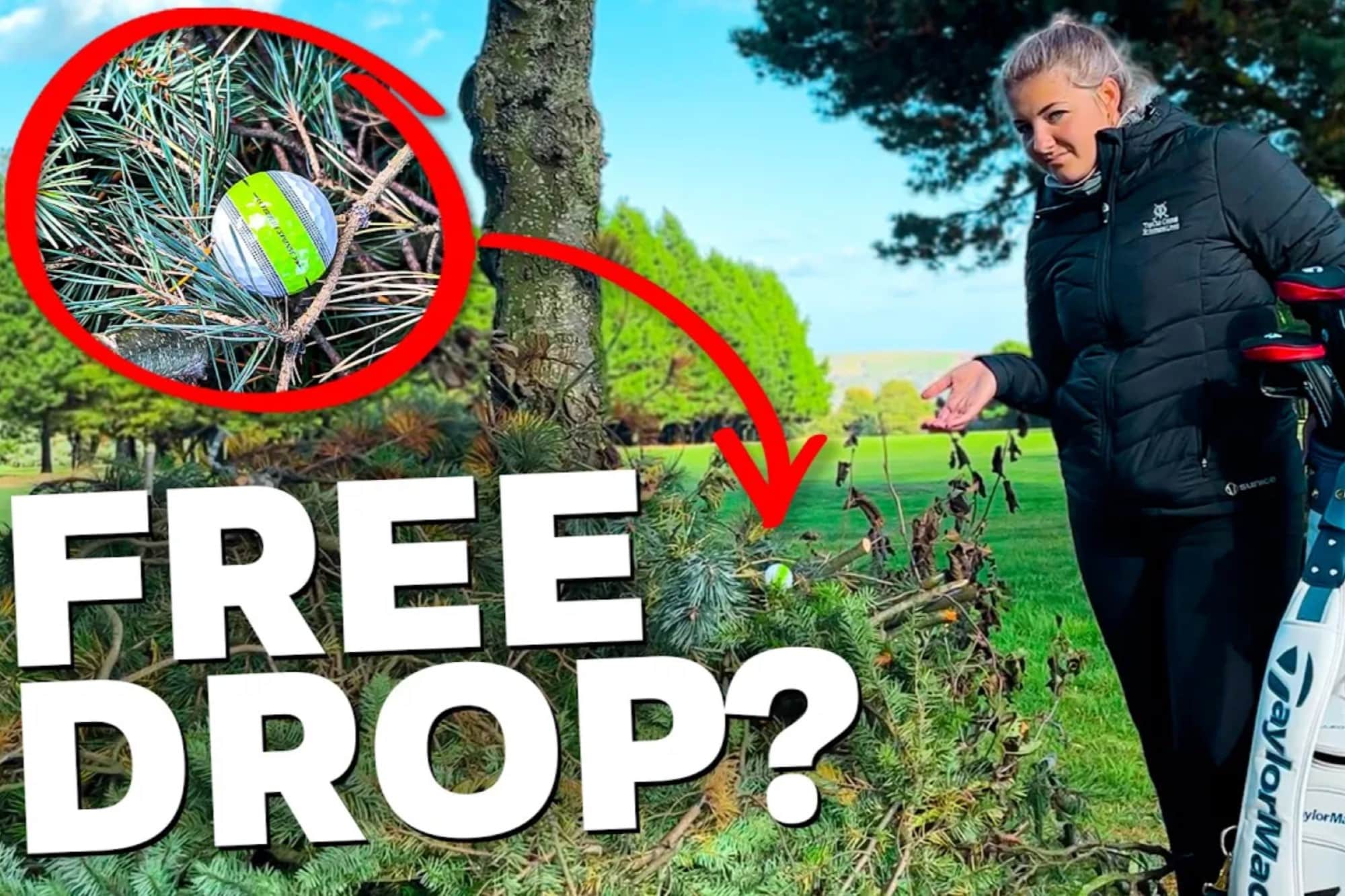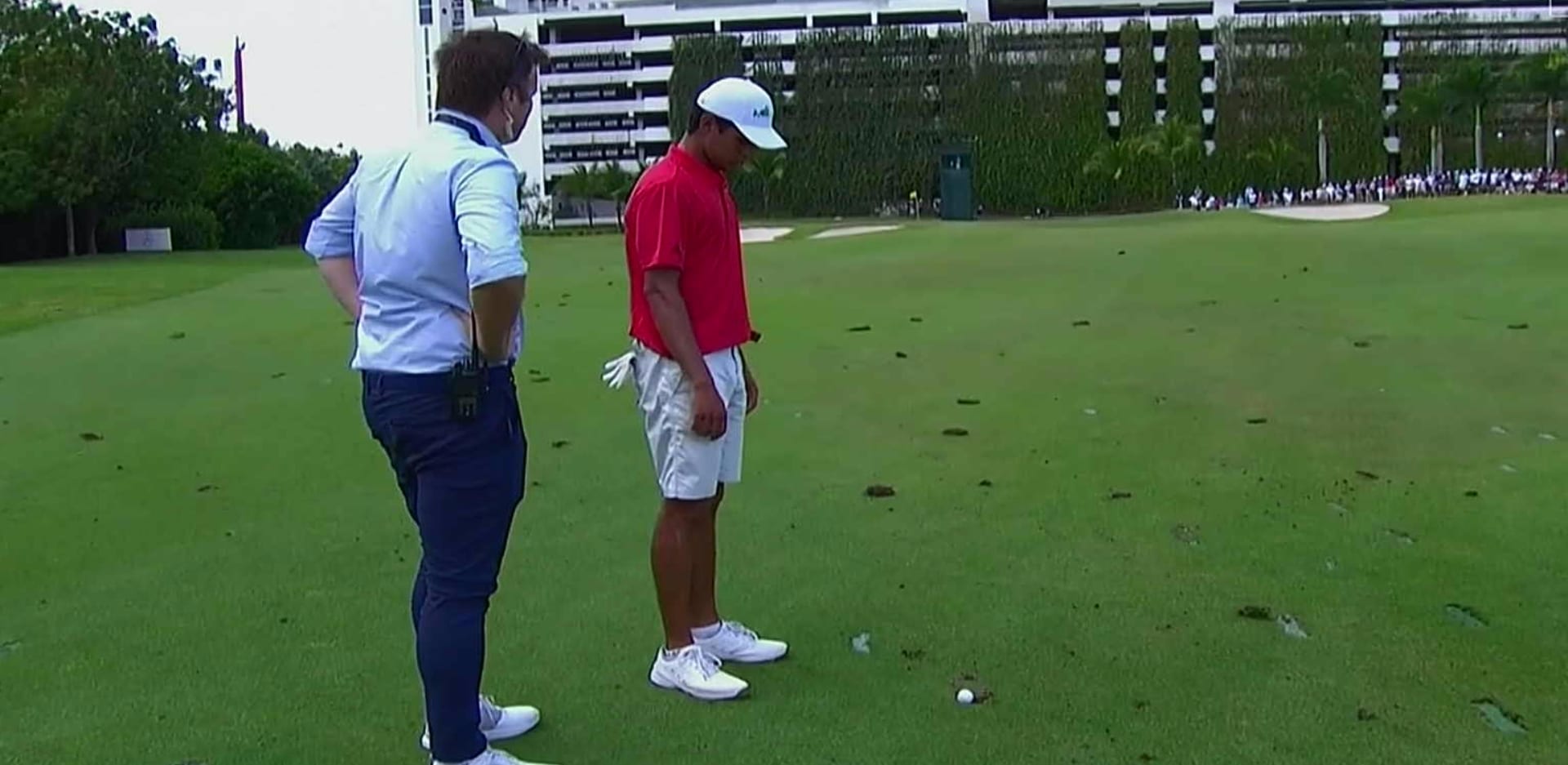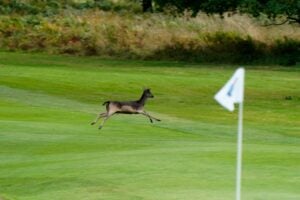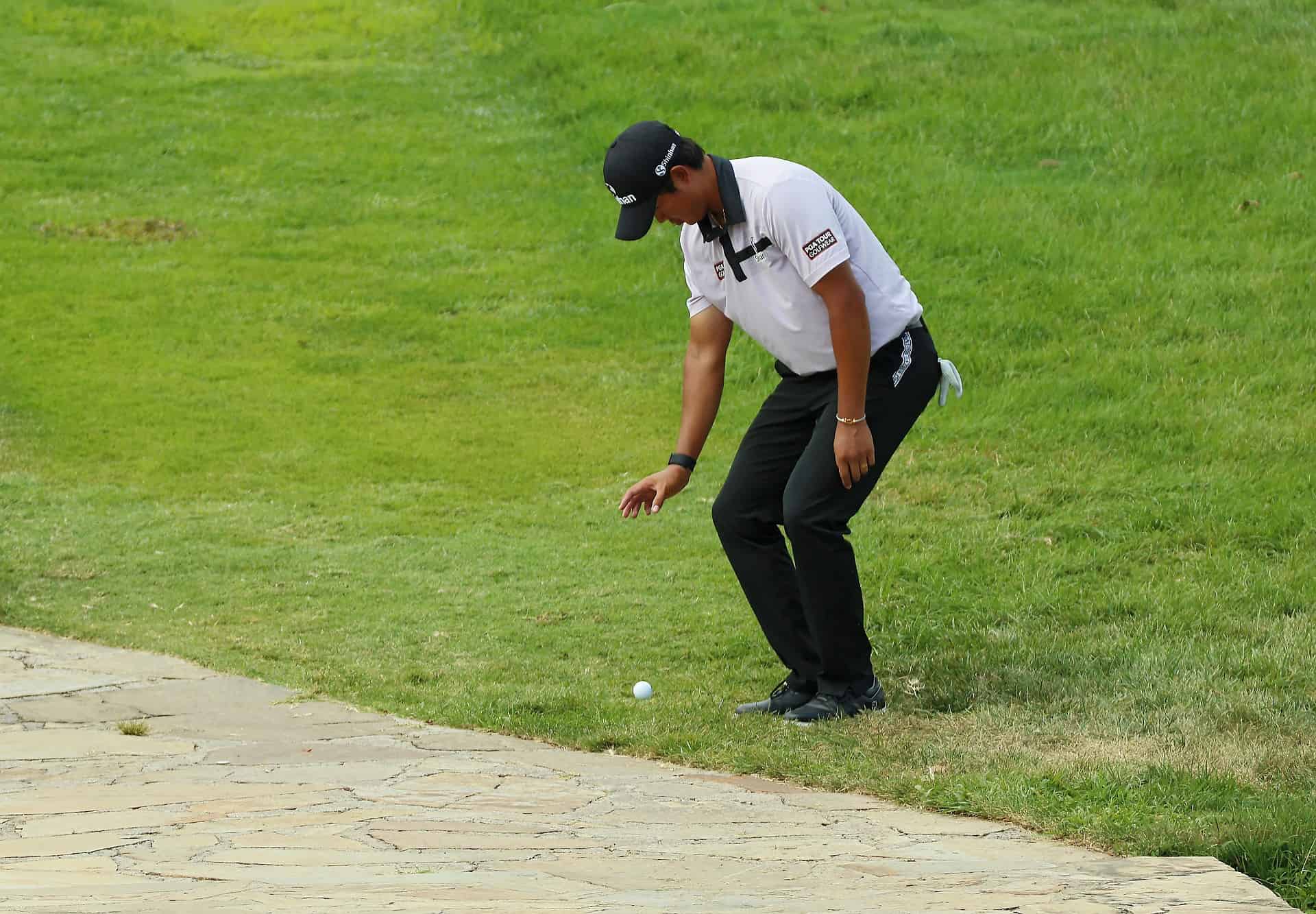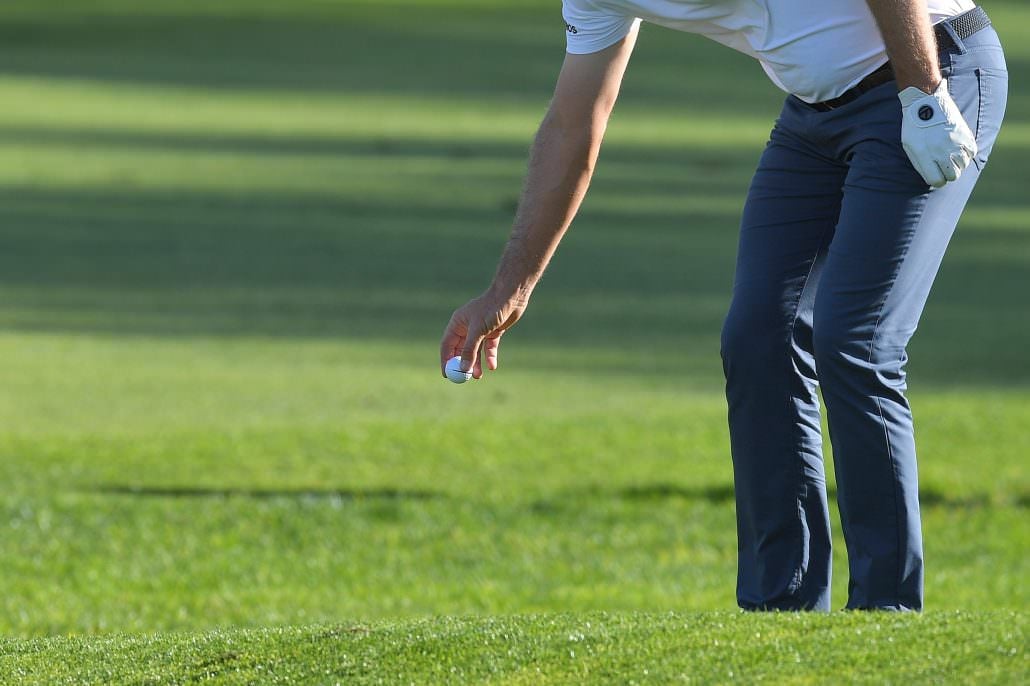
How to correctly drop a golf ball
We all know it’s from knee height, but there is plenty more to consider if you’re going to take relief correctly. Our Rules of Golf guru guides you through
You must drop the ball from knee height. For those of us used to letting it go from the shoulder, or even from over the shoulder if you go back far enough, getting used to the new ways was quite a change in the revisions to the Rules of Golf in 2019.
But making sure it’s knee height is only part of the picture when it comes to dropping a ball and you’ve got to make sure you do it right.
It’s all covered by Rule 14.3 – and so here’s everything you could possibly want to do about how to drop a golf ball…
How to drop a golf ball: What you need to know
Only you can drop the ball
Don’t let another player do it, or a caddie if you’ve got one. If you’re dropping a ball, Rule 14.3b says only the player can do it, though in foursomes (Rule 22.2) or fourball (Rule 23.5a) either partner can act for the other.
Make sure you drop the ball straight down
Don’t spin it, throw it, roll it or do anything else that might have an impact on where the ball comes to rest. When it’s being dropped, it can’t touch either you or your equipment before it hits the ground.
What is knee height?
Sounds obvious, right? But Rule 14.3b makes an important distinction. It means the “height of the player’s knee when in a standing position”. What difference does that make? You don’t need to be standing when the ball is dropped. You could be laid flat on your back, if you wish, to drop the ball – as long as it is done from knee height.
Here’s a complicating question: Does the ball always have to fall that distance to the ground? What if you were dropping on a steep slope?
A clarification to Rule 14.3b (2) deals with this. When there is uneven ground around where a player might drop a ball, it says the distance the ball will fall to the ground depends “on where the player is standing when dropping the ball”.
Read this next bit carefully. The clarification says: “Provided the ball falls a distance that corresponds with knee height from a position where the player could have stood to drop the ball on that spot, the ball has been dropped from knee height”.
If that sounds mind-bending, there are a really helpful pair of diagrams on the R&A’s website that illustrates this in an easy to understand way. Go and check them out. Otherwise, just remember to drop from knee height and you can never really go wrong.

How to drop a golf ball: What if I dropped it wrongly?
Say, for example, you didn’t drop it from knee height. Then you’ve dropped the ball in a ‘wrong way’ and you must correct it. You’ll hear later on about the number of times you can drop before you can then place a ball, but that doesn’t apply here.
If you’ve dropped a ball in a wrong way, Rule 14.3b (4) says there is “no limit” to the number of times you must repeat it until it’s done properly. If you don’t get this bit right, don’t correct it, and hit the ball anyway you’re going to be picking up penalties. We’ll get onto those in a minute.
The ball must be dropped and come to rest in a relief area
Although you don’t have to, this is why it’s recommended to use tees to measure out your relief area when you are going to take a drop. When a ball is dropped, and it’s done so in the right way, it has to come to rest in the relief area.
What if it comes to rest outside the relief area?
Good question. Drop the ball again, making sure you do so once more in the right way.
What if it still won’t stay in the relief area?
If you’ve dropped it in the right way twice and it still won’t behave then you are going to place the ball. You put it on the spot where the ball that you dropped for the second time first touched the ground. If it doesn’t stay there, try again for a second time. If, after that second time, the ball still won’t stay on the spot you then have to find the nearest spot where it will – no nearer the hole, of course. And yes, that might mean the ball is placed outside of the relief area. Still with me?
What if the ball strikes me, or my equipment, after it has hit the ground?
You’ll remember earlier on we said when you drop a ball it can’t touch you or your equipment before it hits the ground. That doesn’t apply if it bounces off you or your bag, or any other outside influence, after it has struck terra firma. If the ball stays in the relief area, your task is complete and you must play the ball as it lies. If it comes out of the relief area, then you revert to the procedures we’ve already outlined above.
What happens if I don’t follow these procedures and make a stroke anyway?
You’re going to be adding penalty shots to your score. But the number of strokes you are hit with depends on whether the ball was played from the relief area or not.
If you make a stroke after dropping a ball in a wrong way, you get one penalty stroke if the shot was made from the relief area.
If it was played from outside the relief area, or if you placed it when you were supposed to drop it, you’ll tag on the general penalty. That’s two shots or loss of hole in match play.
Got a question for our expert?
Despite the changes to the Rules of Golf in 2019 and 2023, there are still some that leave us scratching our heads. I’ll try to help by featuring the best of your queries in this column.
What do you think about these how to drop a golf ball rules? Let me know by leaving a comment on X.
Steve Carroll

A journalist for 25 years, Steve has been immersed in club golf for almost as long. A former club captain, he has passed the Level 3 Rules of Golf exam with distinction having attended the R&A's prestigious Tournament Administrators and Referees Seminar.
Steve has officiated at a host of high-profile tournaments, including Open Regional Qualifying, PGA Fourball Championship, English Men's Senior Amateur, and the North of England Amateur Championship. In 2023, he made his international debut as part of the team that refereed England vs Switzerland U16 girls.
A part of NCG's Top 100s panel, Steve has a particular love of links golf and is frantically trying to restore his single-figure handicap. He currently floats at around 11.
Steve plays at Close House, in Newcastle, and York GC, where he is a member of the club's matches and competitions committee and referees the annual 36-hole scratch York Rose Bowl.
Having studied history at Newcastle University, he became a journalist having passed his NTCJ exams at Darlington College of Technology.
What's in Steve's bag: TaylorMade Stealth 2 driver, 3-wood, and hybrids; TaylorMade Stealth 2 irons; TaylorMade Hi-Toe, Ping ChipR, Sik Putter.


